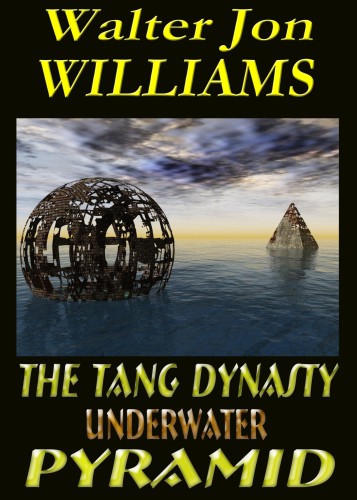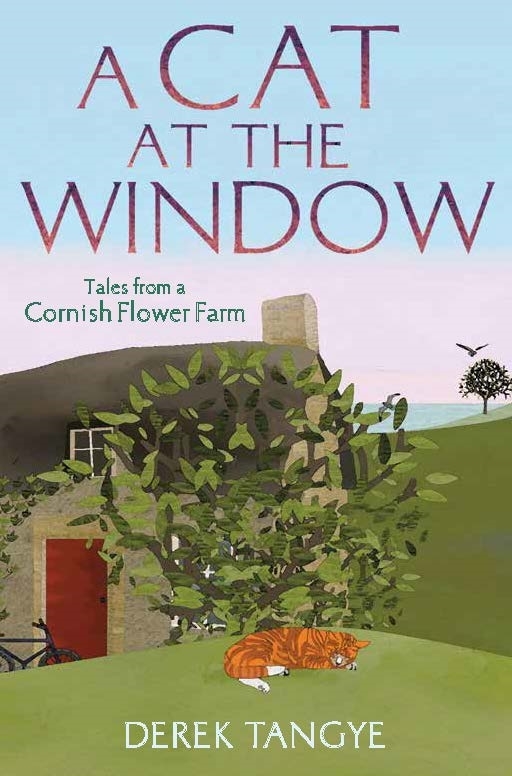oleebook.com
Song of the Samurai de C. A. Parker
de C. A. Parker - Género: English
Sinopsis
Japan, 1745, is a land under the iron grip of the Tokugawa shoguns. Roads are monitored, dissent stifled, and order maintained through blackmail and an extensive network of informers. Amid rumors of rebellion, Kurosawa Kinko– samurai and monk– is expelled in disgrace as the head music instructor of his Zen temple in Nagasaki. He begins an odyssey across Japan, dogged by agents and assassins from an unknown foe. Along his journey, Kinko encounters a compelling cast of merchants, ronin, courtesans, spies, warriors, hermits, and spirits, on a quest to redeem his honor. Inspired by the life of the historical Kurosawa Kinko (1710-1771), master of the shakuhachi flute and founder of the Kinko-ryu school, Song of the Samurai takes the reader on a richly-textured exploration of feudal Japan and the complexities of the human spirit.
Libros Recomendados - Relacionados
Reseñas Varias sobre este libro
Song of the Samurai was a reasonably enjoyable piece of historical fiction. Kurosawa Kinko's journey, both literal and the existential, generally held my interest throughout; however, I was never deeply invested in the story or characters. I would have d to have been able to get more emotionally involved than I did. Instead I always felt a tad removed from it all. On the whole, the book seemed well researched, though, with enough period detail to help paint the scenes. Therefore, I am giving it 3.5 stars. I enjoyed it, but I didn't love it. Worth checking out if you are interested in historical fiction set in feudal Japan.
I received this book as a free eBook ARC via Edelweiss in exchange for an honest review. 1 Brittany110 1 follower
Thank you to PR By The Book for this ARC.
Imagine that The Oddessey, The Canterbury Tales, and Shogun had a baby the result would be The Song of a Samurai. Based on the real-life journey of Kinko Kurosawa, a master of the shakuhachi (Japanese) flute, this novel follows his one-year journey throughout Japan as he balances his identities as samurai, monk, and musician.
I thought this was going to be a pretty straightforward novel, but then, in the first few chapters, I see that Kinko is not your ordinary monk. He is expelled from his home temple for having an affair with a woman who is an important member of a powerful dynastic clan.
What then transpires is a mashup of The Odyssey and The Canterbury Tales, as Kinko meets colorful characters along the way to his new assignment, including ronin, courtesans, spies, hermits, and merchants. Plus, he is assigned certain tasks and sub-quests that help him sort through his emotions, identity crisis, and overall place in this 1700s Japanese landscape.
Each chapter immersed me more and more into this world, and I wanted to know where Kinko would eventually end up. You can certainly tell that Parker knows this subject matter very well but doesnt overload the reader with dense history and descriptions. It was the perfect balance to keep me engaged and help me gain a new appreciation for this period.
While there is a diverse cast of characters, there are no heart-pounding action sequences you will encounter in Shogun. But to me, this novel didnt need a fast pace. Kinko, the reader is going on a purely character-driven journey, which is done masterfully.
If you historical fiction and havent explored this time period in Japan, you should definitely pick up this book. It contains rich descriptions of the people, landscapes, and political unrest during this time that serve as an intriguing backdrop for Kinkos pilgrimage. Dave TaylorAuthor 51 books28
Kinko Kurosawa is a master of the shakuhachi flute and his performances are legendary. The problem is, in 1745 Japan, being a samurai, monk, and musician can be a dicey proposition, especially if you have feelings for a woman who is part of a powerful dynastic clan. When Kurosawa is expelled from his Zen temple in Nagasaki, he begins a pilgrimage across a country tightly controlled by the Shogun and his agents. He meets ronin, courtesans, spies, lives with a hermit for a few months, befriends merchants (who at the time were considered the lowest of classes) and comes face-to-face with his own weaknesses and limitations as he realizes that his shakuhachi isn't for performances at all, but a tool of profound meditation and self-reflection.
I really enjoyed this wonderful adventure story quite a bit and was a bit saddened when it ended. Kurosawa is an everyman, even in this historical era, and even with a protagonist who is a samurai and monk, and his journey of self-discovery is intriguing and engaging. Highly recommended, and a fascinating adjunct to the FX series "Shogun" too, which is (more or less) set in the same era. kathy376
In the mid 1700s, Kurosawa Kinko, a monk and a samurai, disgraces himself and his family by getting involved with a married woman, who is well known and high up in rankings. He is told by his temple to leave town and go to Edo where people will not know what happened at home.
This book takes you through Kinkos journey. He is briefly reunited with his family and meets many different people. He always fears that someone is following him and threatening him. Its not an easy travel and you hope that he will get to Edo safely.
I have to admit, parts of the book really didnt sit well with me. I do know and understand that times were different back in the 1700s and women were seen differently, but were in the year 2024 and theres a better way of writing about women back then. I couldnt get passed this and it definitely effected the way I felt about the book.
This book also talks about lot about how Kinko is well loved by everyone, but I just did not get that sense of charisma and I didnt care much for Kinko, but I do think a major part of my disconnect was from how women were treated back then and it being portrayed in this book.
While I didnt enjoy certain parts of this book, I did love learning about the samurai and monk lifestyle that I most ly wouldnt know that much about even if I looked it up. I enjoyed how simple foods were brought up in the book that we still eat today. You can definitely tell that the author really did his research on this book and while I felt the women were talked about distastefully, I can appreciate how accurate it seems for the time!
I have mixed feelings about this book, but I think it is a great book to learn what life was in Japan in the 1700s, but TW is how women are portrayed in this book. Novels Alive132 2
4-1/2 STAR REVIEW
Kurosawa Kinko rises through the ranks of his temples monks, only to be stripped of his rank and status after falling in love with a married woman.
Author C. A. Parker brings 18th-century Japan to life in Song of the Samurai. Sent away from his temple home of almost two decades, Kinko embarks on a journey of self-reflection. Trading his samurai swords for a shakuhachi (a flute), he befriends a fellow monk, and they travel together for a short while.
Meanwhile, there are rumors of a possible insurrection generating unrest. Kinko must also dodge assailants seeking to punish him for his romantic dalliance. His journey is richly detailed, inspired by the travels of the real Kinko.
His efforts at redemption opened the door to many possibilities, some of which he had never considered. Ultimately, he finds peace in the most unly place.
Song of the Samurai delivers a richly detailed story of a Japanese monk who embarks on a personal quest for enlightenment. ~ Amy for Novels Alive Bailey Young445 12
Song Of The Samurai is a surprising, thought-provoking, intriguing, unique, and carefully written story! I did not know what to expect when I picked up this book. I knew nothing about Japan during 1745 or that the main character, Kurosawa Kinko, is inspired by a historical figure. This fictional tale taught me a lot while also having the extra excitement fiction always brings.
This is the tale of Kinko a samurai and monk who is expelled in disgrace. The Tokugawa shotguns have a strong hold on Japan which makes his travels dangerous and challenging. He befriends many individuals and must evade dangerous enemies.
This book is ultimately three things: a historically realistic yet fictious ode Japan 1745 and the mysterious inspiring life of Kurosawa Kinko, a fascinating adventure full of unique experiences, and the story of one man's resilience, mindset shift, and journey of self-discovery. Kim WilchAuthor 6 books48
This fictional Japanese story reflects the real life of Kinko, a monk stripped of his status. We follow him as he trades his sword for a flute on a spiritual journey. Full of suspense, revenge, and redemption, we learn about his quest for peace. The author did a fantastic job weaving the story to bring Japanese history to life, a topic I had no idea about. It was done in a suspenseful way to hold my attention, at the same time, learning. Maddy101
I love historical fiction, but the main danger with it is the potential to get boring - and fast. Luckily, @caparkerauthor made sure we were on the edge of our seats from the shocking (and gruesome) prologue to the very end. It's a longer book with lots of beautiful scenery and vast, carefully-studied historical knowledge to savor rather than speed through. Loved every minute of it!
Special thanks to @prbythebook @runningwildpressllc for sending me a copy ???? Highly recommend! Luke Blanchford15 1 follower
Autor del comentario:
=================================












